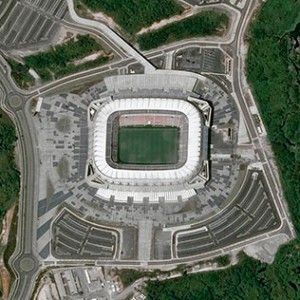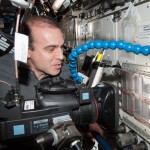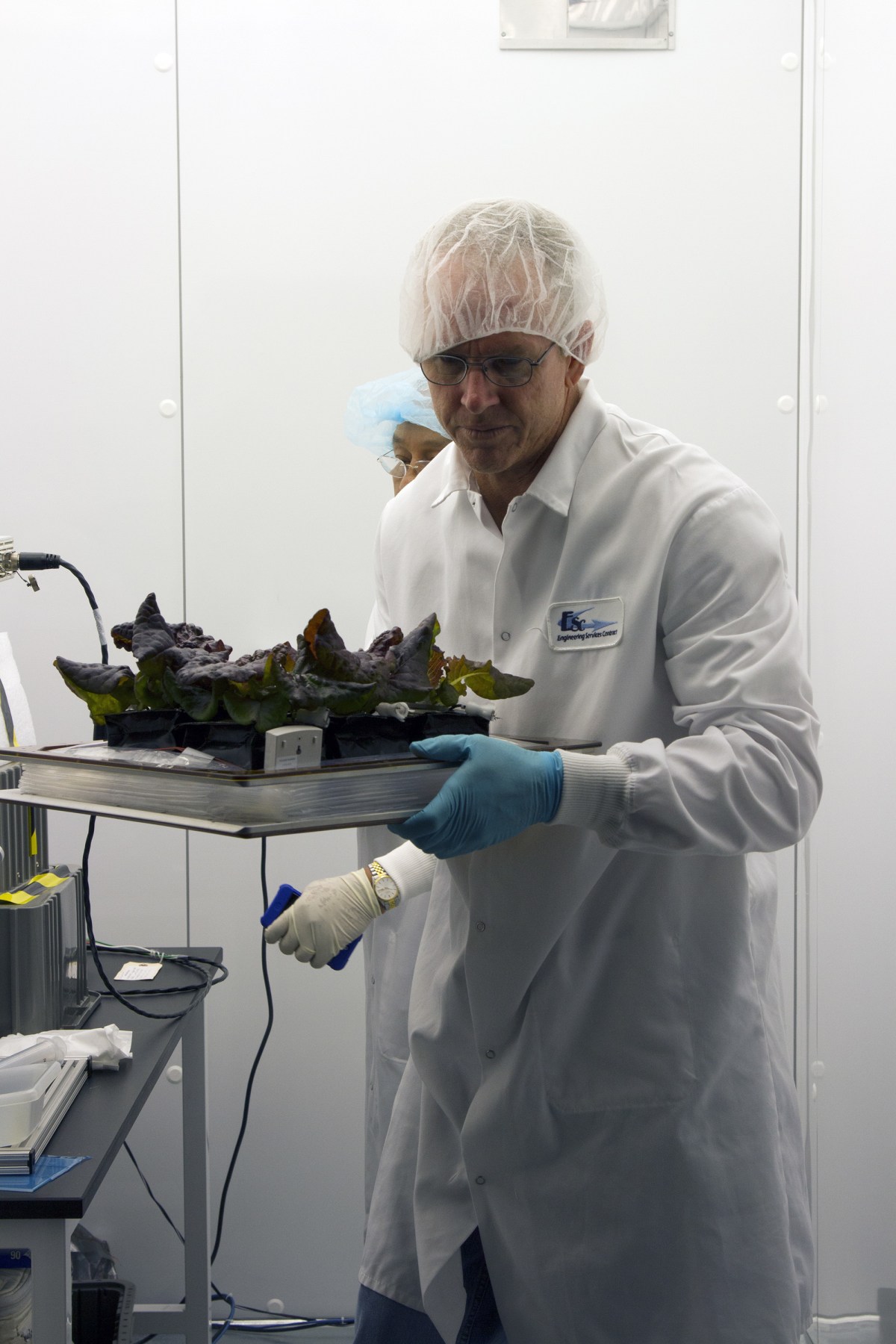 This American flag was taken to the International Space Station in 2011 on STS-135, the final mission of the space shuttle. Flown on the first space shuttle mission in 1981, the flag is to be awarded to the first crew of astronauts to launch from U.S. soil to the orbiting laboratory. NASA’s Commercial Crew Program is working with aerospace partners to make that flight happen by the end of 2017.
This American flag was taken to the International Space Station in 2011 on STS-135, the final mission of the space shuttle. Flown on the first space shuttle mission in 1981, the flag is to be awarded to the first crew of astronauts to launch from U.S. soil to the orbiting laboratory. NASA’s Commercial Crew Program is working with aerospace partners to make that flight happen by the end of 2017.
What Equipment Would Your Spacecraft Have?
The Apollo astronauts took a rover with them to the moon so they could survey more of the lunar surface. The space shuttle used its robotic arm to perform numerous functions from operating experiments to grabbing satellites including the Hubble Space Telescope for repairs to maneuvering large modules into place during construction of the International Space Station. NASA’s next generation of human-carrying spacecraft are in development now. If it were up to you, what equipment would you include in the design and what would you use it for?
Spaceport Magazine Features CCP Partners
NASA’s Commercial Crew Program partners are featured in the new edition of Kennedy Space Center’s Spaceport Magazine posted July 1. You can read the online magazine at the ISSUU digital newsstand or download the pdf.
NASA Veteran Inspired by Destiny that ‘Lies Above Us’
 Jon Cowart, an engineer with a pioneering spirit and more than three decades of human spaceflight experience, recently was honored by NASA’s Astronaut Corps. Learn more about Cowart and his Silver Snoopy award at http://go.nasa.gov/VD2zdS.
Jon Cowart, an engineer with a pioneering spirit and more than three decades of human spaceflight experience, recently was honored by NASA’s Astronaut Corps. Learn more about Cowart and his Silver Snoopy award at http://go.nasa.gov/VD2zdS.
You also can check out the outspoken engineer’s 2012 TEDx event called “A Retrospective on the Future of Space Exploration.”
NASA’s Commercial Crew Partners Focus on Testing, Analysis to Advance Designs
 NASA’s aerospace industry partners are taking their designs and operational plans for the agency’s Commercial Crew Program (CCP) through a series of comprehensive tests, evaluations and review boards this summer as they move through important milestones – all with an eye on launching people into orbit from American soil by 2017.
NASA’s aerospace industry partners are taking their designs and operational plans for the agency’s Commercial Crew Program (CCP) through a series of comprehensive tests, evaluations and review boards this summer as they move through important milestones – all with an eye on launching people into orbit from American soil by 2017.
Read the details here.
Station Astronauts Show Off World Cup Skills
The United States plays Germany today in the World Cup and the viewership will not be limited to the Earthbound. The crew of the International Space Station is expected to tune in for the match.
Reid Wiseman kidded his colleagues in orbit that the stronger U.S. team spirit aboard the space station is a sign the U.S. will be stronger on the field too. “I believe we will win. It’s two against one up here, so I think the U.S. chances are pretty good,” Wiseman said during an in-flight interview with ESPN on June 24.
Wiseman says the crew already was checking its busy schedule for Thursday to see how they can fit in watching the game during what will be afternoon time for them. Read about the friendly rivalry between American and German station crew members here.
Ant Experiment Sheds Light on Search Techniques
Researchers dispatched a crew of ants to the International Space Station recently to study the methods the colony use to search and explore their surroundings. Scientists are studying whether the process the ants use can be translated into a mathematical algorithm that can aid robotics and computer programs on Earth. Read more here in an article about the ant-stronauts. You can also click here for specific notes about the experiment. Astronauts on the station including Rick Mastracchio, pictured, filmed the colony go about its work.
Spot Our Destination
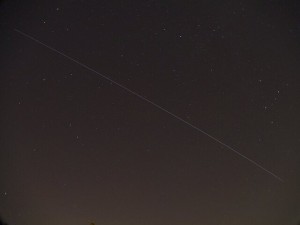 Folks in Central Florida will be able to see the International Space Station move overhead for three minutes Monday night beginning at 9:44 p.m EDT. Its maximum height will be 69 degrees and it will appear in the north-northwest and disappear at east-southeast. You can log on to http://spotthestation.nasa.gov/ to get email alerts and to check observation times for cities all over the world. The ISS, which is Commercial Crew Program’s ultimate destination, is a one-of-a-kind research laboratory and testbed for long-duration spaceflight technology.
Folks in Central Florida will be able to see the International Space Station move overhead for three minutes Monday night beginning at 9:44 p.m EDT. Its maximum height will be 69 degrees and it will appear in the north-northwest and disappear at east-southeast. You can log on to http://spotthestation.nasa.gov/ to get email alerts and to check observation times for cities all over the world. The ISS, which is Commercial Crew Program’s ultimate destination, is a one-of-a-kind research laboratory and testbed for long-duration spaceflight technology.
Plants Harvested as Part of Station Experiment
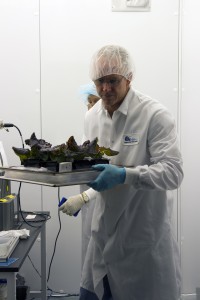 Scientists at NASA’s Kennedy Space Center in Florida harvested the leaves of red lettuce plants grown on Earth inside the International Space Station Environmental Simulator chamber at the Space Station Processing Facility. The plants were grown using the same kind of Veggie chamber that was deployed and is being operated on the station. Read some of the details here. The researchers on the ground also stuck closely to the same schedules procedures and operations that were followed by astronauts on the station so they could produce a reliable control group. Such research is crucial to NASA’s planning for deep-space missions by astronauts and the unique laboratory of the ISS is critical to achieving that research. The Commercial Crew Program is working with aerospace industry partners to begin operational flights by 2017 on privately built and operated spacecraft that will permit more crew members to work on the station and conduct research there.
Scientists at NASA’s Kennedy Space Center in Florida harvested the leaves of red lettuce plants grown on Earth inside the International Space Station Environmental Simulator chamber at the Space Station Processing Facility. The plants were grown using the same kind of Veggie chamber that was deployed and is being operated on the station. Read some of the details here. The researchers on the ground also stuck closely to the same schedules procedures and operations that were followed by astronauts on the station so they could produce a reliable control group. Such research is crucial to NASA’s planning for deep-space missions by astronauts and the unique laboratory of the ISS is critical to achieving that research. The Commercial Crew Program is working with aerospace industry partners to begin operational flights by 2017 on privately built and operated spacecraft that will permit more crew members to work on the station and conduct research there.
World Cup Ball Gets NASA Aero Test Treatment
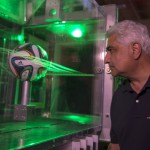 You’ve seen models of CCP-partner spacecraft designs put through their aerodynamic paces in a wind tunnel already, but have you wondered what would happen if a soccer ball were treated to the same thing? For one thing, soccer balls and any spherical object don’t necessarily behave as some might expect. Smooth spheres fly very unpredictably, it turns out – something that surprised World Cup goalies in 2010 when the smooth-surfaced ball slipped through the air around their outstretched hands. In this video and feature from NASA’s Ames Research Center in California, Rabi Mehta, chief of the Experimental Aero-Physics Branch there, describes what makes this year’s version different. For more about NASA and the World Cup, go to nasa.gov/worldcup.
You’ve seen models of CCP-partner spacecraft designs put through their aerodynamic paces in a wind tunnel already, but have you wondered what would happen if a soccer ball were treated to the same thing? For one thing, soccer balls and any spherical object don’t necessarily behave as some might expect. Smooth spheres fly very unpredictably, it turns out – something that surprised World Cup goalies in 2010 when the smooth-surfaced ball slipped through the air around their outstretched hands. In this video and feature from NASA’s Ames Research Center in California, Rabi Mehta, chief of the Experimental Aero-Physics Branch there, describes what makes this year’s version different. For more about NASA and the World Cup, go to nasa.gov/worldcup.









